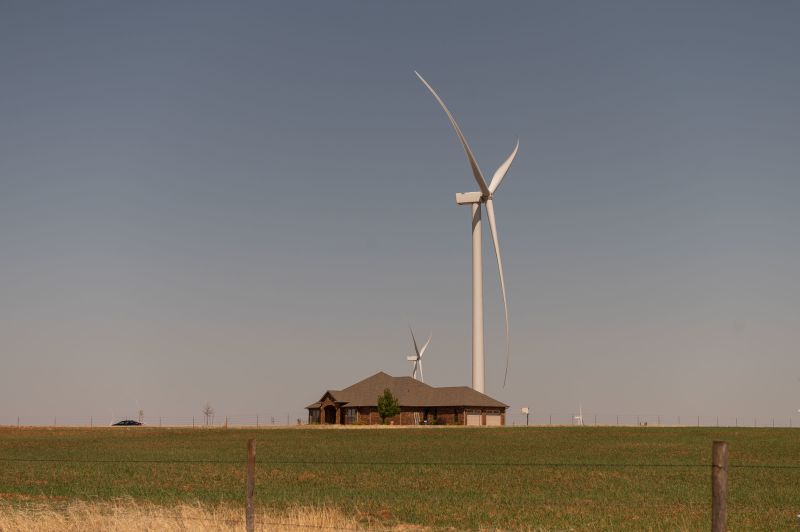
How much are wind turbines dragging down home values? A new study has surprising answers
As wind energy expands in the United States, concerns have grown about the potential for tall turbines to be a drag on property values.
But a new nationwide study that analyzed data from 300 million home sales and 60,000 wind turbines finds turbines’ impact on home values is much lower than previously thought – about a 1% drop on average for a home with at least one wind turbine within six miles.
The study’s authors find the most impact on home prices happens if a home is less than five miles from a turbine; the further a home is from a turbine, the less of a value hit it takes.
Even for homes close to a turbine, the study finds the negative impact to property value “diminishes and eventually disappears” within a decade.
To measure the impact, scientists set out with a very simple question, said Max Auffhammer, a study co-author and professor at the University of California, Berkeley.
Getting the answer required building a massive mapping database of the distance between US homes and wind turbines, accounting for changes in topography and other factors.
“We calculated whether you can see the turbine – or whether there is a mountain in the way, for example – and if so, how the house value changes compared to other houses in the same area where residents cannot see the wind turbine,” Wei Guo, the study’s lead author and a researcher at the Italian Centro Euro-Mediterraneo sui Cambiamenti Climatici, said in a statement.
The study also explored just how big wind turbines appear to the human eye. They found that, on average, a wind turbine five miles away appeared roughly the same size as an aspirin tablet held with an outstretched arm. If the same turbine were one mile away, it would appear the size of a golf ball.
Auffhammer said one of the study’s most interesting findings was most of the dips in housing value were driven by early wind turbine installations in the US at the end of the 1990s. Closer to 2020, “we don’t really find an effect,” Auffhammer added.
The number of people who live very short distances from a turbine is also very small – the study recorded fewer than 250,000 housing transactions within a mile of a wind turbine.
Much of the growth in wind turbines in the US has been on farmland in the Midwest, Great Plains states and Texas. In many cases, farmers lease their land out to utility companies and are paid for that space.
Auffhammer said he is hopeful the data can help farmers and homeowners make a calculated decision on whether lease payments are enough to help balance out a potential loss of value on their homes.
The study’s researchers said that recovery in value over time could suggest homeowners and prospective buyers are simply getting more comfortable with wind turbines, and the machines are starting to blend into the surrounding landscape in the same way electrical infrastructure does.
“The way I think about it is, the first piece of electric transmission infrastructure people probably were yelling, ‘what is this ugly tower with wires? It’s ruining the landscape,’ because you’re not used to it,” Auffhammer said. “Now when I drive down the highway, I don’t even notice transmission infrastructure anymore. I just got used to it. I think something similar here is happening to windmills.”
